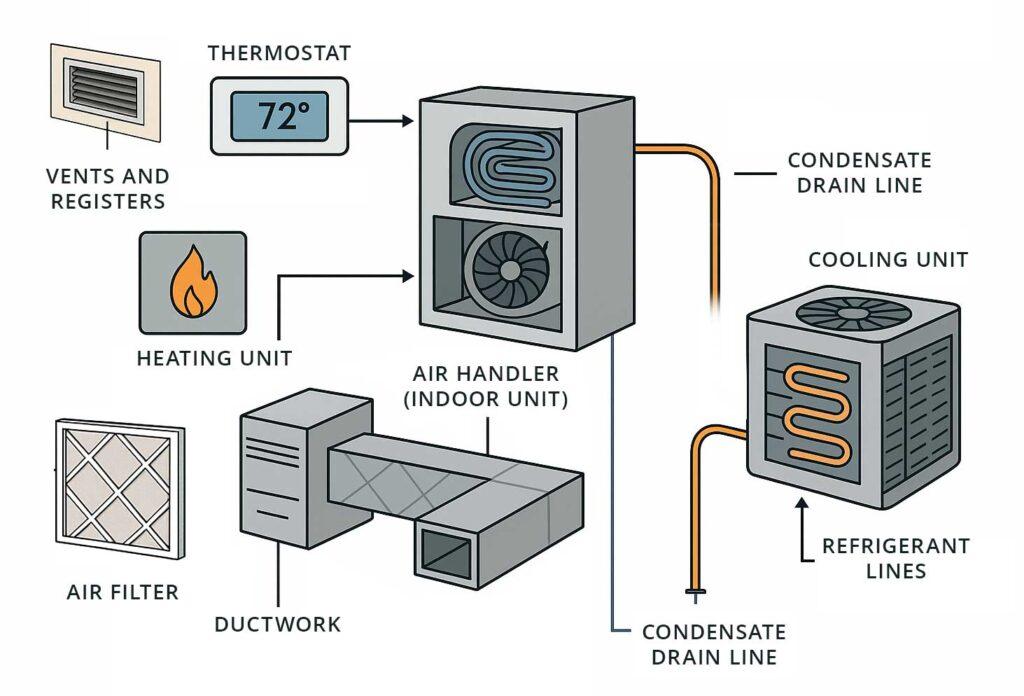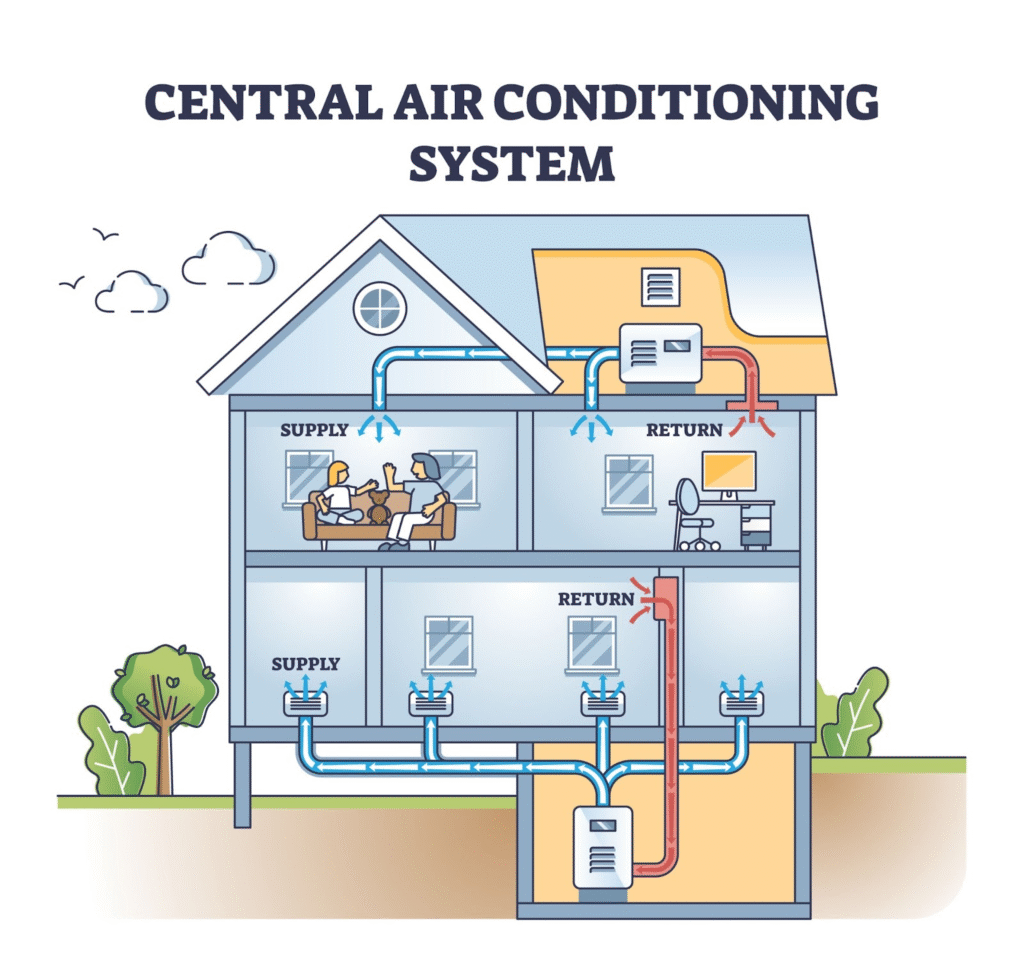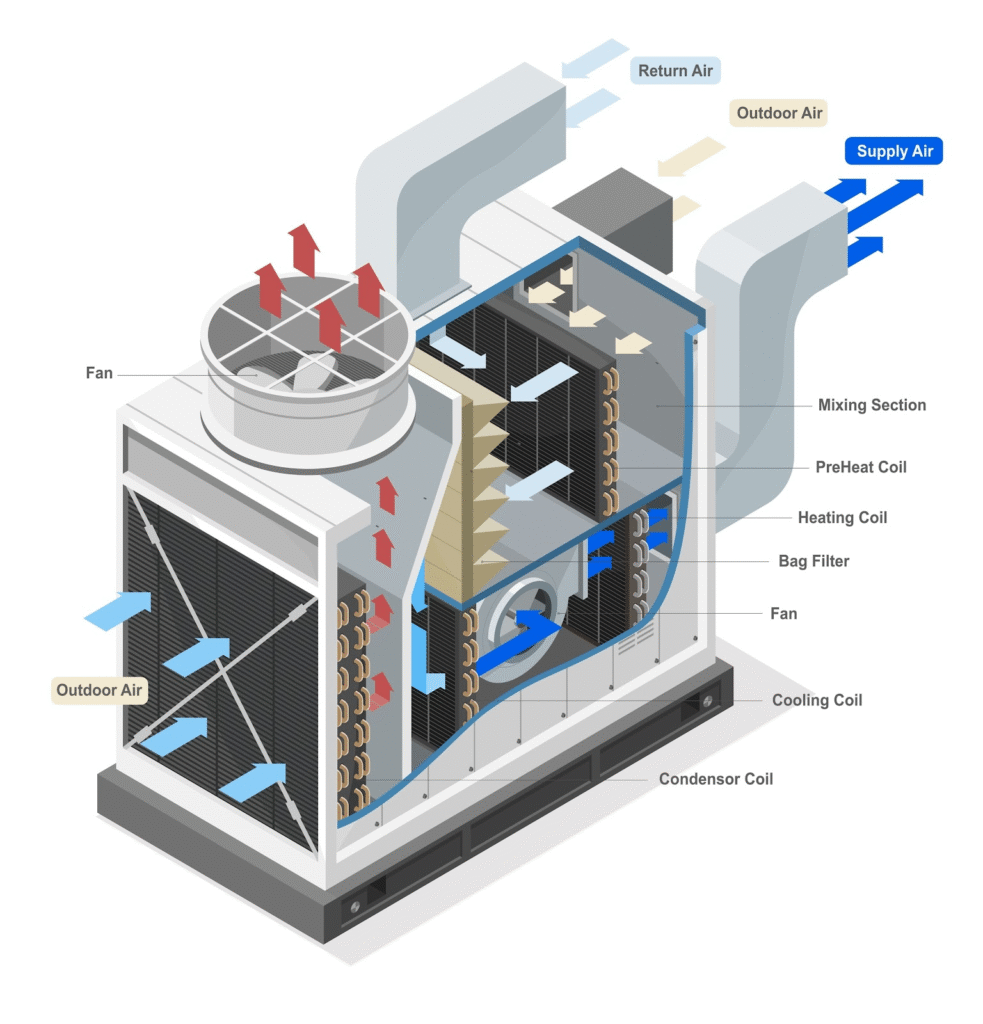Your home or business’s Heating, Ventilation, and Air Conditioning (HVAC) system is a complex network working tirelessly to maintain comfortable temperatures and healthy indoor air quality. Whether you’re a homeowner curious about your system or a business owner looking to understand your building’s climate control, having a basic grasp of how an HVAC system works is beneficial. This guide will break down the fundamentals, accompanied by helpful diagrams illustrating residential and commercial HVAC setups.
What is an HVAC System?
An HVAC system is a comprehensive setup designed to control the temperature, humidity, and overall air quality within an enclosed space. The acronym stands for Heating, Ventilation, and Air Conditioning, encompassing all the essential functions for creating a comfortable and healthy indoor environment year-round. These systems are crucial in residential homes, commercial buildings, industrial facilities, and vehicles.
How Does an HVAC System Work? The Basic Principles
At its core, an HVAC system’s primary function is to regulate humidity, temperature, and air quality within an enclosed space. It achieves this through a cycle of processes:
- Air Intake: The system draws in air from the indoor space through return vents.
- Air Treatment: The air is then filtered to remove dust, pollen, and other airborne particles. It is then heated or cooled to your desired temperature via the furnace or air conditioner.
- Air Circulation: The treated, filtered air is distributed throughout the building via a network of ducts and vents.
- Exhaust: Stale indoor air can be exhausted outside, and fresh air is brought in through a separate system, ensuring proper ventilation.

What are the Components of an HVAC System?
While specific components can vary between residential and commercial systems, and the type of heating and cooling used, here are the fundamental parts you’ll typically find:
- Thermostat: The control center that allows you to set the desired temperature and manage the system’s operation.
- Air Handler (Indoor Unit): This unit circulates the air throughout the ductwork. It contains a blower fan and, depending on the system, may also house the evaporator coil (for cooling) or heating elements. In a furnace setup, the furnace itself serves the heating function, and an attached air handler circulates the air.
- Heating Unit: This generates heat and can be a furnace (burning natural gas, propane, or oil), electric heating elements, or part of a heat pump system.
- Cooling Unit: This removes heat from the air and typically consists of a compressor, condenser coil (located outdoors), and an evaporator coil (located indoors). In a heat pump system, this unit can also provide heating.
- Ductwork: A network of channels that distributes conditioned air from the air handler to the various rooms and returns air back to the system for treatment.
- Air Filter: Cleans the air circulating through the system, trapping dust, pollen, and other pollutants.
- Refrigerant Lines: Copper tubing that carries refrigerant between the indoor and outdoor units in cooling and heat pump systems.
- Condensate Drain Line: Removes moisture that condenses out of the air during the cooling process.
- Vents and Registers: The openings in your walls, floors, or ceilings where conditioned air enters rooms and return air is drawn back into the system.
Understanding a Residential HVAC System with a Diagram
A residential HVAC system is a single, self-contained system that handles heating and cooling for an entire home. It uses a network of air ducts to distribute conditioned air. The most common setup involves an indoor unit (furnace and evaporator coil) and an outdoor unit (condenser).
Here is a diagram of a typical residential HVAC system:

Licensed by Google (AI – generated example)
Commercial HVAC System Diagram: A Different Scale
Commercial HVAC systems operate on the same principles as residential ones but on a much larger and more complex scale. They are designed to manage the unique heating and cooling needs of larger buildings.
How Commercial HVAC Differs from Residential
- Size and Capacity: Commercial systems are significantly larger, with higher tonnage to handle the heating and cooling demands of big spaces.
- Location: Many commercial systems are large rooftop units, which saves indoor space.
- Complexity: Commercial systems often incorporate more advanced components like chillers, cooling towers, and economizers to manage larger thermal loads.
- Zoning: Commercial systems are typically zoned, meaning different areas of a building can be heated or cooled to different temperatures simultaneously.
Commercial HVAC Diagram Explained
A common type of commercial system is the rooftop unit. These contain all the components of a residential system (compressor, condenser, evaporator) in a single large cabinet on the roof. For very large buildings, a central plant system may be used, with a chiller providing cool water to air handlers throughout the building.
Here is a diagram of a common commercial HVAC system:

Licensed by Google (AI generated)
Need Expert HVAC Service? Contact Meyer Heating & Air
Whether you’re looking to upgrade your home system or need professional maintenance, understanding how your HVAC works is the first step. Our team at Meyer Heating & Air has the expertise to service, repair, and install all types of HVAC systems, ensuring your home or business remains comfortable and efficient. Contact us today for reliable service and professional advice.

